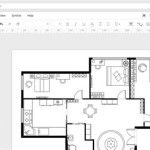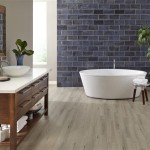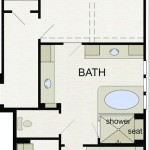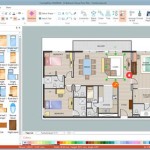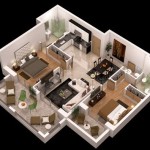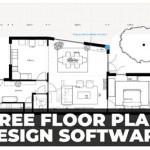Best Flooring for a Lake House: A Comprehensive Guide
Selecting the appropriate flooring for a lake house presents unique challenges compared to choosing flooring for a conventional home. The proximity to water introduces factors such as increased humidity, potential for spills and water damage, and the constant tracking of sand, mud, and debris from outdoor activities. Therefore, the ideal flooring solution must be durable, water-resistant or waterproof, easy to clean, and aesthetically pleasing to complement the lake house environment.
This article explores various flooring options suitable for lake houses, considering their advantages, disadvantages, and specific applications within the house. Key aspects such as durability, maintenance, cost, and aesthetic appeal will be evaluated to provide a comprehensive guide for informed decision-making.
Water Resistance and Durability: Primary Considerations
The most critical factor in selecting lake house flooring is its ability to withstand moisture. Constant exposure to humidity and the likelihood of water spills and leaks necessitates a water-resistant or, preferably, waterproof material. In addition to water resistance, durability is paramount. Lake houses often experience heavy foot traffic, especially during peak seasons, and flooring must be able to resist scratches, dents, and wear and tear from outdoor elements being tracked inside.
Materials that are prone to warping, swelling, or developing mold and mildew in humid environments should be avoided. Similarly, flooring that scratches easily or requires specialized cleaning products may not be practical for the demanding environment of a lake house. The ideal flooring solution should minimize maintenance and provide long-lasting performance.
Exploring Popular Flooring Options for Lake Houses
Several flooring options are commonly considered for lake houses, each with its own set of characteristics and suitability for different areas within the home. Understanding the specific properties of each material allows homeowners to make informed decisions tailored to their individual needs and preferences.
Luxury Vinyl Plank (LVP) and Luxury Vinyl Tile (LVT): LVP and LVT are engineered flooring products designed to mimic the appearance of hardwood or tile while offering superior water resistance and durability. They consist of multiple layers, including a waterproof core, a decorative layer, and a protective wear layer. The wear layer is crucial for resisting scratches and scuffs, with thicker wear layers providing greater protection.
LVP comes in planks that resemble hardwood, while LVT comes in tiles that mimic ceramic or stone. Both options are relatively easy to install, often featuring click-lock systems that do not require glue. The waterproof nature of LVP and LVT makes them ideal for bathrooms, kitchens, and entryways where moisture is a concern. They are also resistant to staining and fading, making them suitable for areas exposed to direct sunlight. The cost of LVP and LVT varies depending on the quality and thickness of the wear layer, but it is generally more affordable than hardwood or tile.
Tile (Ceramic and Porcelain): Tile, particularly porcelain tile, is another excellent choice for lake house flooring due to its inherent waterproof properties and exceptional durability. Porcelain tile is denser and less porous than ceramic tile, making it even more resistant to water absorption and staining. Tile is also highly resistant to scratches, dents, and fading, making it suitable for high-traffic areas and areas exposed to sunlight. It is also easy to clean and maintain, requiring only regular sweeping and mopping.
Tile offers a wide range of design options, including various sizes, shapes, colors, and patterns. It can mimic the appearance of natural stone, wood, or other materials, providing a versatile aesthetic choice. However, tile can be cold underfoot, especially during cooler months, which may require the use of rugs or radiant floor heating for added comfort. Installation of tile requires specialized tools and skills, making professional installation recommended. The cost of tile varies depending on the type, size, and design, but it is generally more expensive than LVP or LVT.
Engineered Hardwood: Engineered hardwood consists of a thin layer of hardwood veneer glued to a core of plywood or high-density fiberboard (HDF). This construction provides greater stability than solid hardwood, making it less susceptible to warping or swelling in humid environments. However, engineered hardwood is not waterproof and should be protected from excessive moisture exposure. Spills should be cleaned up promptly to prevent water damage.
Engineered hardwood offers the aesthetic appeal of solid hardwood at a lower cost. It is available in a wide range of wood species, finishes, and plank sizes. Installation is relatively straightforward, with click-lock systems available for some products. While engineered hardwood is more resistant to moisture than solid hardwood, it is still susceptible to damage from standing water. It is best suited for areas with low moisture levels, such as living rooms and bedrooms. The cost of engineered hardwood varies depending on the quality of the veneer and the core material.
Concrete: Concrete flooring is gaining popularity in modern lake house designs due to its durability, versatility, and industrial aesthetic. Concrete can be stained, polished, or sealed to create a variety of looks, from a smooth, contemporary finish to a rustic, textured surface. It is highly resistant to water damage, scratches, and dents, making it suitable for high-traffic areas and areas prone to spills.
Concrete can be cold underfoot, similar to tile, which may require the use of rugs or radiant floor heating. It can also be porous and susceptible to staining if not properly sealed. Regular sealing is necessary to maintain its appearance and prevent water absorption. Concrete flooring is relatively low-maintenance, requiring only regular sweeping and mopping. The cost of concrete flooring varies depending on the complexity of the design and the finishing techniques used.
Area Rugs and Runners: Regardless of the primary flooring material chosen, area rugs and runners are essential for adding warmth, comfort, and style to a lake house. They can help define different living spaces, provide cushioning underfoot, and protect the underlying flooring from scratches and wear and tear. When selecting rugs and runners, it is important to choose materials that are durable, stain-resistant, and easy to clean.
Synthetic materials such as polypropylene and nylon are good choices for high-traffic areas, as they are resistant to stains and fading. Natural fibers such as wool and cotton are also good options, but they may require more frequent cleaning and maintenance. Consider using rugs with non-slip backings to prevent them from sliding on hard surfaces. Regularly vacuum and clean rugs to remove dirt and debris and prevent staining.
Subfloor Preparation: An Often Overlooked Necessity
Proper subfloor preparation is crucial for the success of any flooring installation, especially in a lake house environment where moisture levels may be higher. The subfloor should be level, clean, and dry before installing any flooring material. Any imperfections or irregularities in the subfloor can lead to problems such as uneven flooring, squeaking, and premature wear and tear.
Before installing flooring, inspect the subfloor for any signs of moisture damage, such as water stains, mold, or mildew. Repair any leaks or water damage before proceeding with the installation. If the subfloor is uneven, it may be necessary to use a self-leveling compound to create a smooth and level surface. Clean the subfloor thoroughly to remove any dirt, dust, or debris. Allow the subfloor to dry completely before installing the flooring material.
Matching Flooring to Specific Lake House Areas
Different areas of a lake house have different needs and requirements when it comes to flooring. The ideal flooring choice for a bathroom may not be the same as the ideal flooring choice for a living room. Consider the specific function of each area and the level of moisture exposure and foot traffic when selecting flooring.
Bathrooms: Bathrooms require flooring that is completely waterproof and resistant to mold and mildew. Tile (ceramic or porcelain) and LVP/LVT are excellent choices for bathrooms. Avoid using solid hardwood or engineered hardwood in bathrooms, as they are susceptible to water damage.
Kitchens: Kitchens also require flooring that is water-resistant and easy to clean. Tile, LVP/LVT, and concrete are all good options for kitchens. Consider using slip-resistant flooring in kitchens to prevent accidents.
Living Rooms and Bedrooms: Living rooms and bedrooms can accommodate a wider range of flooring options. Engineered hardwood, LVP/LVT, and carpet are all popular choices for these areas. Consider using area rugs to add warmth and comfort.
Entryways: Entryways are high-traffic areas that require durable and easy-to-clean flooring. Tile, LVP/LVT, and concrete are all good options for entryways. Consider using a doormat to prevent dirt and debris from being tracked inside.
Cost Considerations and Budgeting
The cost of flooring can vary significantly depending on the type of material, the quality of the product, and the complexity of the installation. Before making any decisions, it is essential to establish a budget and consider the long-term costs of maintenance and repair.
LVP and LVT are generally more affordable than tile or hardwood. Concrete flooring can be relatively inexpensive if you opt for a simple design, but the cost can increase significantly with more complex finishes. Installation costs can also vary depending on the complexity of the job and the experience of the installer. Get multiple quotes from different contractors to ensure you are getting a fair price.
Consider the long-term costs of maintenance and repair when budgeting for flooring. Some flooring materials, such as tile and concrete, are very low-maintenance and require only regular cleaning. Other materials, such as hardwood, may require more frequent maintenance and repair to keep them looking their best.

Lake House Flooring Ideas The Lilypad Cottage

Selecting Flooring For Your Custom Lake Home Colby Construction

What Are The Best Flooring Options For Lake Homes A House In Hills

The Best Flooring Options For Your White Bear Lake Home Magazine

Flooring Options For Lake Living Tracy Tesmer Design Remodeling

Enhance Your Woodsy Retreat With Charming Cabin Flooring Ideas

Flooring For A Lake House

My New Favorite Floors

Lake Home Design Ideas For 2024

Best Rooms For Laminate Flooring Twenty Oak


